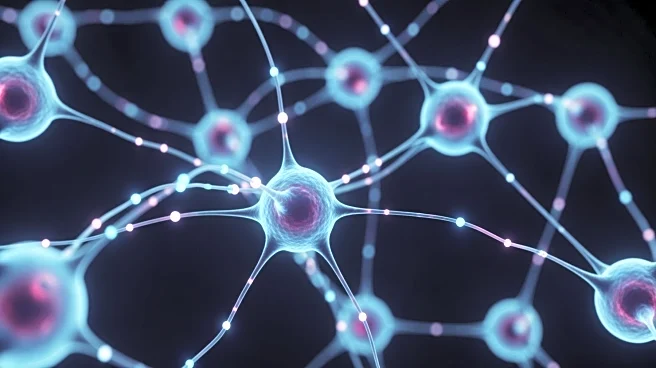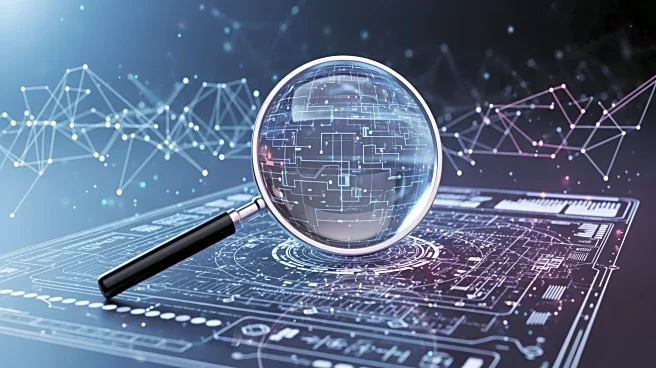What's Happening?
Scientists at the USC Viterbi School of Engineering and the School of Advanced Computing have developed artificial neurons that replicate the electrochemical behavior of real brain cells. This breakthrough,
published in Nature Electronics, represents a significant advancement in neuromorphic computing, which aims to create hardware modeled after the human brain. Unlike previous digital processors, these neurons use chemical interactions to initiate computational processes, closely mimicking natural brain activity. The research, led by Professor Joshua Yang, introduces a device called a 'diffusive memristor' that uses silver ions to emulate brain dynamics. This innovation could lead to smaller, more efficient chips that process information like the human brain, potentially paving the way for artificial general intelligence.
Why It's Important?
The development of artificial neurons that function like real brain cells could revolutionize computing by significantly reducing chip size and energy consumption. This advancement is crucial as current AI systems consume vast amounts of energy. By mimicking the brain's efficiency, these new chips could enable more sustainable AI development. The research also holds promise for advancing artificial general intelligence, which could transform various industries by enabling machines to perform complex tasks with human-like understanding. The potential to replicate natural intelligence in hardware could also provide new insights into brain function, offering benefits to both technology and neuroscience.
What's Next?
The next steps involve integrating large numbers of these artificial neurons to test their efficiency and capabilities in replicating brain functions. Researchers aim to explore other ionic materials compatible with standard semiconductor manufacturing processes to further develop this technology. The ultimate goal is to create sustainable AI systems that operate with similar intelligence levels as the human brain without excessive energy consumption. This could lead to significant advancements in AI applications across various fields, including healthcare, robotics, and data processing.












